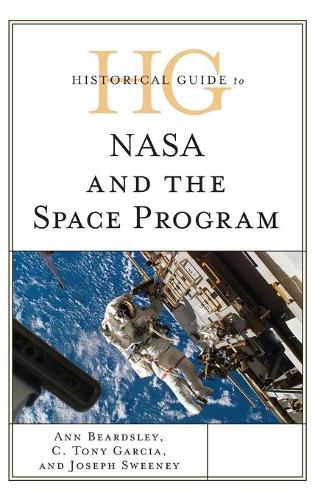
Historical Guide to NASA and the Space Program
(Hardback)
Publishing Details
Historical Guide to NASA and the Space Program
By (Author) Ann Beardsley
By (author) C. Tony Garcia
By (author) Joseph Sweeney
Bloomsbury Publishing PLC
Rowman & Littlefield Publishers
9th September 2016
United States
Classifications
General
Non Fiction
629.40973
Physical Properties
Hardback
422
Width 158mm, Height 239mm, Spine 36mm
803g
Description
NASAthe National Aeronautics and Space Administration created in the wake of the Space Acthas and continues to accomplish those precepts every day. With many hundreds of satellites launched into space and close to 200 human spaceflights, NASA is a proven leader in space exploration. Most of the US space exploration efforts have been led by NASA, including the Apollo moon-landing missions, the Skylab space station, and later the Space Shuttle. Currently, NASA is supporting the International Space Station and is overseeing the development of the Orion Multi-Purpose Crew Vehicle, the Space Launch System and Commercial Crew vehicles. NASA is also responsible for the Launch Services Program which provides oversight of launch operations and countdown management for unmanned NASA launches. The Historical Guide to NASA and the Space Program contains a chronology, an introduction, appendixes, and an extensive bibliography. The dictionary section has over 500 cross-referenced entries on space missions, astronauts, technical terms, space shuttles, satellites and the international space station. This book is an excellent access point for students, researchers, and anyone wanting to know more about NASA and space exploration.
Reviews
The authors of this encyclopedic work are aptly identified as aficionados of all things space-relatedBeardsley being a second-round candidate for the Mars One campaign, Garcia a software engineer, and Sweeney trained in applied intelligence. The format offers short, one-paragraph descriptions of everything NASA, from the well-known series of 19 Apollo Project space missions that included Neil Armstrong's moon landing in 1969, to the lesser-known XS-1 Experimental Spaceplane 1, a DARPA-funded space transport system. The book has several helpful sections explaining the field's many acronyms and abbreviations, a time line, and an introduction that covers the development of the NASA program. The book's four appendixes include materials (mostly from 2015) such as that year's budget request, a list of NASA instruments, employees of NASA, and a partial list of active missions. This is a handy resource for teachers, students, and anyone who seeks a quick explanation of the many dealings and endeavors of NASA, and a starting point for research on a wide range of astronomical topics. The material is not complex and the descriptions are thorough, so that novice researchers through professionals will benefit. Summing Up: Recommended. High school through undergraduate students; general readers; professionals/practitioners. * CHOICE *
Outer space and the frontier of exploration is riveting and also comes with setbacks of budget constraints, disasters, international discord, political persuasion, and public perception. The Historical Guide to NASA and the Space Program will be a useful tool for proletarian sky watchers and researchers seeking a superior understanding of NASA and where its space program originates from with respect to future endeavors. Recommended. * American Reference Books Annual *
This book contains a chronology, an introduction, appendices and an extensive bibliography, but the main part is the dictionary section, with over 500 cross-referenced entries on space missions, astronauts, technical terms, space shuttles, satellites and the International Space Station. [T]his is a good and useful book. * s *
Author Bio
Ann Beardsley is a graduate of Western College (Oxford, Ohio) in liberal arts (BA) and the University of Houston (MBA). She was also a second-round candidate for the international Mars One campaign to send humans Mars by 2025. Prior publications include those in business management and health journals. C. Tony Garcia, is a software engineer with a bachelors degree in computer science from New Mexico State University and is an instrument-rated private pilot. He is an active amateurastronomer and solar eclipse chaser with a lifelong interest in all things NASA. His free time is spent exploring theSouthwestern back country, seeking dark skies for astrophotography, and fire spinning. Joseph Sweeney is a strategic account manager with a bachelors degree in linguistics and a masters degree in applied intelligence. His background in research and analysis has provided him with experience in various forms of reporting and technical writing. Additionally, he is a graphic designer and an aficionado of all things related to space and space exploration, two passions that he frequently brings together through infographics.
